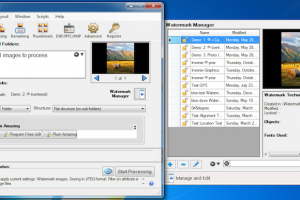

6), which entails that the SoC must have at least two SPI controllers. The DATASHEET, Raspberry Pi Compute Module 3+, Raspberry Pi Compute Module 3+ Lite, Release 1, January 2019 lists 2xSPI as available peripherals (p. I have no information on the BCM2837B0 used on Models 3B+, 3A+ and the Compute Module 3+. The BCM2835 (used on the Raspberry Pi Model 1 and the Zero), the BCM2836 (used on Model 2) and the BCM2837 (used on Model 2 ver 1.2 and Model 3) systems on chip have 2 SPI master controllers each with 3 independent slave select signals ( BCM2835 ARM Peripheral, Broadcom, 2012 p. Here is what I have been able to piece together. SPI on the Raspberry Piĭetailed information about Broadcom systems on chip (SoC) is hard to find. It is, in fact, among the best technical articles I have read on Wikipedia.
#A BETTER FINDER ATTRIBUTES 5 SERIAL SERIAL#
Seriously, the article Serial Peripheral Interface is informative, thorough and nevertheless easily understood. With those questions in mind, I feel comfortable enough to move on. Is the slave select signal needed when there is only one slave?.Is the slave select active low or can it be high?.How many bits in a single word transmitted ?.What is the bit order? Least significant bit first or last ?.Should the trailing or leading edge of the clock pulse be used to latch the data? That is called the clock phase.


The only devices harmed in the course of writing this post were a Raspberry Pi 3 B and a cheap, Saleae Logic knockoff, 8 channel logic analyzer.

I haven't reached that goal yet, concentrating for the time being on "SPI on the Pi". This time, I wanted to look into using the SPI bus much as I used an I☬ bus for arbitrary communication between a Raspberry Pi and a microcontroller. So far, my only use of the Serial Peripheral Interface (SPI) had been a frustrating but ultimately successful attempt at connecting a relatively uncommon SPI LCD display with an ESP8266, then an Arduino Uno and, lately, an Orange Pi.
#A BETTER FINDER ATTRIBUTES 5 SERIAL HOW TO#
Install the SdFat library - there is an example called Timestamp.ino describing in detail how to do it.As is often the case on this site, this post is a summary of what was learned as I have become a little more familiar with a new-to-me technology. The following information is from file creation date and time in sd card ?: However, you need to use a callback function. You notice everything has the same creation date? The library doesn't have any way of knowing what the date is. The basic SD.h library doesn't set the attributes. The Arduino SD library, is based on Github: greiman/SdFat, by William Greiman.


 0 kommentar(er)
0 kommentar(er)
